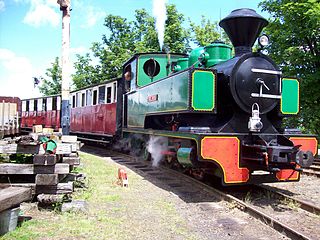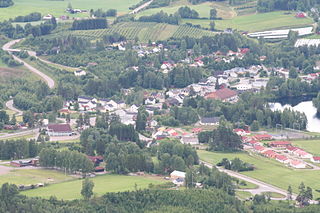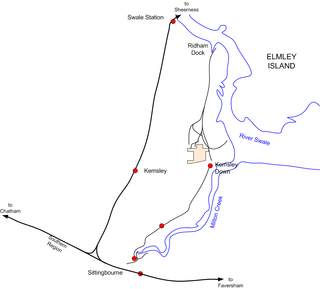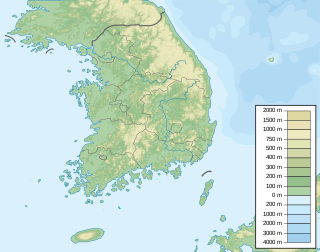Kemsley Paper Mill is a paper mill located in the village of Kemsley near Sittingbourne in the English county of Kent.
Contents

Kemsley Paper Mill is a paper mill located in the village of Kemsley near Sittingbourne in the English county of Kent.


| Sittingbourne & Kemsley Light Railway / Bowaters Paper Railway | ||||||||||||||||||||||||||||||||||||||||||||||||
|---|---|---|---|---|---|---|---|---|---|---|---|---|---|---|---|---|---|---|---|---|---|---|---|---|---|---|---|---|---|---|---|---|---|---|---|---|---|---|---|---|---|---|---|---|---|---|---|---|
| ||||||||||||||||||||||||||||||||||||||||||||||||
Paper manufacture started in Sittingbourne in 1708, when Peter Archer was recorded as a paper-maker. Sittingbourne Paper Mill existed from circa 1769, which by 1820 had grown and was owned by Edward Smith. After newspaper editor turned publisher Edward Lloyd bought the factory in 1863, it burnt down that August. [1]
Covering paper production from his London sites with longer shift production, Lloyd had the Sittingbourne paper mill rebuilt in 1863, but closer to the new railway to enable easier shipping of product to his newspaper presses in Bow, East London. After purchasing the Daily Chronicle in 1876, Lloyd installed new machinery capable of producing 1,300 square feet (120 m2) of paper per minute, and handed over management of the site to his youngest son, Frederick. By 1882, the transfer of paper-making from London to Sittingbourne was complete, [1] enabled by using esparto grass imported from Algeria and Southern Spain via the creek port as a replacement for expensive cotton rag; the output supplied newsprint to his presses in Bow, East London. [2]
The site's production capability was expanded by converting the mill to steam power, and, after the death of his father in 1889, eldest son Frank introduced a horse-drawn tramway to carry materials from a new wharf at Milton Creek to the mill. As the mill expanded and silt built up in Milton Creek, in 1904 the tramway was converted into a narrow gauge railway, to allow both ships and barges to offload pulp product at Ridham, for onward transport to the mill. On what is now known as the Sittingbourne and Kemsley Light Railway, the first of three steam locomotives came into operation in 1906, all being 0-4-2 Brazil type tank engines, sourced from Kerr Stuart.
In 1910, United Newspapers was created to buy out Lloyd’s newspapers, separating it from the paper-making side which continued as Edward Lloyd Ltd. By 1912, the resultant investment made the Sittingbourne Paper Mill the largest producer of newsprint in the world, with 1200 employees using 17 machines to make over 2000 tonnes per week and supply the demands of Fleet Street. [2]
Following a shortage of pulp in the early 1920s, from 1924 Frank developed a new mill at Kemsley, together with a model village for its employees - this became the present-day Kemsley village. After his death in 1936, the renamed Lloyd Group was taken over by Sir William Berry, who formed the Bowater-Lloyd Group. [2]
After both plants were acquired by Finnish based paper company Metsa Serla in 1998, the decision was made to close the Sittingbourne Mill in October 2006, with the last reel being produced on 23 January 2007. [2]
Today, the Sittingbourne site has been redeveloped, whilst the Kemsley mill is owned by DS Smith plc. With an annual production capacity of around 800,000 tonnes, it is the second biggest recovered fibre-based paper operation in Europe. Presently the plant produces K-Light testliner in white and brown, dual purpose liner/fluting, standard fluting and plasterboard liners.

Newsprint is a low-cost, non-archival paper consisting mainly of wood pulp and most commonly used to print newspapers and other publications and advertising material. Invented in 1844 by Charles Fenerty of Nova Scotia, Canada, it usually has an off white cast and distinctive feel. It is designed for use in printing presses that employ a long web of paper rather than individual sheets of paper.

Sittingbourne is an industrial town in the borough of Swale in Kent, south-east England, 17 miles (27 km) from Canterbury and 45 miles (72 km) from London. The town sits beside the Roman Watling Street, an ancient British trackway used by the Romans and the Anglo-Saxons and next to the Swale, a strip of sea separating mainland Kent from the Isle of Sheppey. The town became prominent after the death of Thomas Becket in 1170, since it provided a convenient resting point on the road from London to Canterbury and Dover.

The Sittingbourne & Kemsley Light Railway in Kent is a 2 ft 6 in narrow gauge heritage railway that operates from Sittingbourne to the banks of The Swale.
Rexam plc was a British-based multinational consumer packaging company headquartered in London, England. After spending much of its life as a paper producer known as Bowater, it diversified and became a leading manufacturer of beverage cans. It had 55 plants in over 20 countries across Asia, Europe, North America and South America. In June 2016, Rexam was acquired by Ball Corporation for $8.4 billion.

Hvittingfoss is a village in the municipality of Kongsberg in Buskerud, Norway. Hvittingfoss has traditionally been associated with the manufacture of pulp, paper and paper products.
Norske Skog Skogn AS is a pulp mill and paper mill situated in Levanger, Norway, which produces newsprint. Situated on the Fiborgtangen peninsula in Skogn, the mill has three paper machines with a total annual capacity of 600,000 tonnes. Pulp is produced both from virgin fibers at an on-site thermomechanical pulp (TMP) mill and from recycled paper at a deinking (DIP) mill. Part of Norske Skog, it is the sole remaining newsprint mill in Norway.

The Bowaters Paper Railway was a 2 ft 6 in narrow gauge industrial railway. It had the distinction of being the last steam-operated industrial narrow gauge railway in Britain when it closed in 1969. Part of the system still operates as the Sittingbourne & Kemsley Light Railway.
Norske Skog Union was a paper mill located in Skien in Norway. The mill was part of the Norske Skog Corporation and opened in 1873 with the name Union Co. The mill had two paper machines that produced 240,000 tonnes of newsprint and book paper. It was closed down in 2006.

Milton Regis is a village in the district of Swale in Kent, England. Former names include Milton-next-Sittingbourne, Milton Royal, Middleton, Midletun and Middletune. It has a population of about 5,000. Today it is a suburb of Sittingbourne although this has not always been the case, Milton Regis has the older and richer history. Until around 1800 Sittingbourne was a smaller hamlet and under the control of the Manor of Milton Regis.

Kemsley is a suburb of Sittingbourne in Kent, England.
The Tasman Mill site is a pulp and paper mill located on Fletcher Avenue just outside the town of Kawerau in New Zealand. The Tasman Mill site is the largest single employer in the Eastern Bay of Plenty region. Three pulp or paper companies operate in Kawerau: Norske Skog operate the mechanical pulp mill and paper mill; Oji Fibre Solutions, formerly Carter Holt Harvey, operate the kraft pulp mill; and SCA who manufacture tissue and base paper.

Edward Lloyd was a London publisher. His early output of serialised fiction brought Sweeney Todd, a gentleman vampire and many romantic heroes to a new public – those without reading material that they could both afford to buy and enjoy reading. Its popularity earned him the means to move into newspapers.

Wansbrough Paper Mill was a paper mill located in the town of Watchet, Somerset, when it was the UK's largest manufacturer of coreboard.

Ridham Dock is a dock on The Swale in the English county of Kent. It is located in the parish of Iwade around 4 miles (6.4 km) north of Sittingbourne.

Elk Falls Mill was a pulp mill and paper mill located in the Canadian town of Campbell River, British Columbia, operating between 1952 and 2010. At the end of its life, the mill had three paper machines, with a combined annual production of 373,000 tonnes of newsprint and 153,000 tonnes specialized papers.

Snowflake Mill was a pulp mill and paper mill located in the US town of Snowflake, Arizona. The mill had two paper machines which produced 339,000 tonnes of newsprint and uncoated fine paper. It sourced its fiber from two deinking pulp lines. The mill has 293 employees as of 2014. Transport to and from the mill was carried out on the Apache Railway.
Jeonju Paper Corporation, trading as Jeonju Paper, is a South Korean pulp and paper company. Headquartered in Seoul, it operates Jeonju Mill and Cheongwon Mill, with a combined 1,030,000 tonnes annual production of paper, mostly newsprint. The company is owned by Morgan Stanley Private Equity Asia and Shinhan Private Equity. The company was established as the South Korean operating subsidiary of PanAsia Paper on 1 February 1999, PanAsia Paper Korea. Ownership passed to Norske Skog in 2005, with the company becoming Norske Skog Korea. They sold the company to the current owners in 2008, after which the current name was adopted.

Jeonju Mill is a pulp mill and paper mill situated in Jeonju, South Korea. Owned by Jeonju Paper, the mill produces 850,000 tonnes of newsprint and magazine paper annually. The mill sources fibers both from virgin wood, including sawmill residue, as well as from deinking. The mill has four paper machines. The mill has the third-largest production capacity for newsprint in the world and the largest deinking mill in the world.

Malaysian Newsprint Industries Sdn Bhd is a pulp and paper company based in Petaling Jaya, Malaysia. It operates a single pulp mill and paper mill in Mentakab, which produces an annual 280,000 tonnes of newsprint sourced entirely from deinked pulp from recycled paper.

Singburi Mill is a pulp mill and paper mill situated in Sing Buri, Thailand. Owned by the CAS Group, the mill sources its fiber from deinking to feed a single paper machine producing newsprint. PM1 has an annual production of 125,000 tonnes. The mill had 239 employees in 2013, and was the sole manufacturer of newsprint in Thailand, approximately producing the entire country's consumption.
Coordinates: 51°21′48.3″N0°45′05.3″E / 51.363417°N 0.751472°E